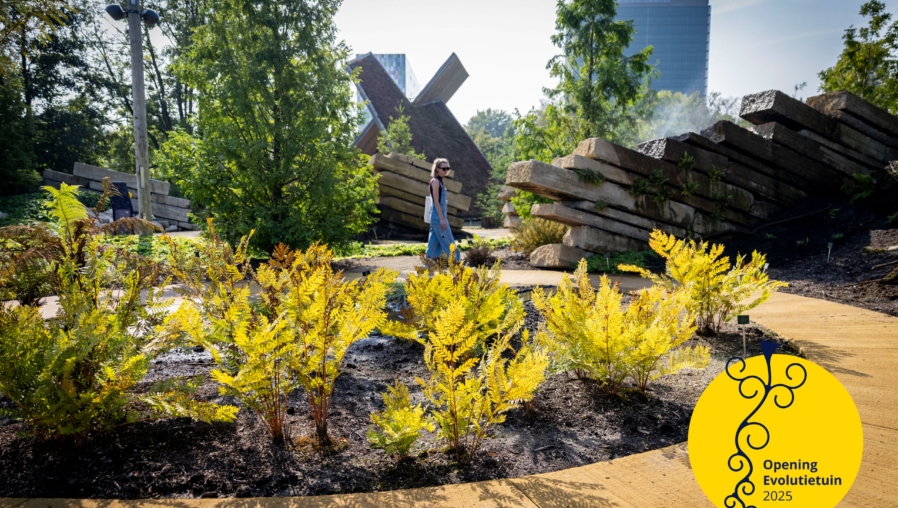On a journey through the history of plant evolution in the new Evolution garden

The new Evolution garden at the Utrecht University Botanic Gardens will officially open in June. As visitors walk through the Evolution garden, they will embark on a journey through more than 900 million years of plant evolution: from the earliest Algae to the Flowering plants, the most diverse group of plants on Earth today. Gijs Steur, curator at the Botanic Gardens: “An evolution garden of this scale and completeness is something I have not yet seen in any other botanical garden.”
Because the previous Evolution garden at the Botanic Gardens was outdated in both content and accessibility, Steur and his colleagues felt it was time for a new, updated version. One that reflects current scientific understanding and is clear and accessible to a broad audience.
“Evolution is the foundation of the immense diversity of plants,” Steur explains. “There are nearly half a million plant species in the world. To be able to classify them, understanding evolution is essential. But it is also complex. What better way to grasp it than by visualising plant evolution in a garden?”
Well thought out design
To best convey the message, a great deal of thought went into the garden’s design. “The story is much clearer now,” Steur said. “As you walk through the garden, you encounter everything in evolutionary order. Moving from the Mosses to the Flowering plants, you can see how the different plant groups are connected. Additionally, none of the paths are dead ends, symbolizing that evolution is an ongoing process. In the layout, we also allocated more space to larger plant groups than to smaller ones. So simply by walking through the garden, you already gain a lot of information.”
Installations
In addition to information panels, the Evolution garden features art installations at various points, which were developed in collaboration with Studio Louter and artist Frank Tjepkema. These installations can be found at key moments, essential developments, in the evolution of plants, such as the emergence of seeds or the appearance of flowers. The installations are dynamic in various ways. Some can be operated, while others reveal new details when viewed from different angles. This sense of movement reflects the idea that evolution is always in motion.
“The installations are very visual and abstract. They allow us to engage a wider audience,” Steur indicates.
Education
The new Evolution garden was not only designed with the general public in mind. It also plays a role in several courses for biology students. For example, students learn to recognize different groups of plants in the garden, and material from the garden is used for plant practicals.
Even more complete
Even though the garden already offers a good representation of plant diversity, it will become even more complete in the coming years. “We have taken steps to ensure that even the more demanding plants can thrive here,” says Steur. “For example, we have dug ditches and created raised areas for better drainage. And as the plants in the garden mature and grow larger, they provide shade and shelter from the wind, creating conditions for special plants that we cannot grow in the garden just yet.”
Opening month Evolution garden
In June, there are all kinds of activities to do around the opening of the Evolution Garden. More information.

Ombion Centre for Animal-free Biomedical Translation celebrates launch and site opening
On July 7, 2025, the Ombion Centre for Animal-free Biomedical Translation was officially launched and opened its location at Utrecht Science Park. The centre promotes the transition to animal-free medical innovations and collaborates with over 60 partners on research, education, and practical implementation.

“An Academic Quarter with…”
The shortcast series “An Academic Quarter with…” takes you on a 15-minute journey to surprising spots at Utrecht Science Park, sharing stories about sustainability, biodiversity, and history. Listen on Spotify or at one of the recycled listening poles on campus.

Utrecht Science Week 2025 programme announced
The programme for Utrecht Science Week 2025 has been announced. From now on, you can register for one or more of the many inspiring events. More events will follow in the coming weeks. Take a look, register for the events you would like to attend and don’t miss anything!
